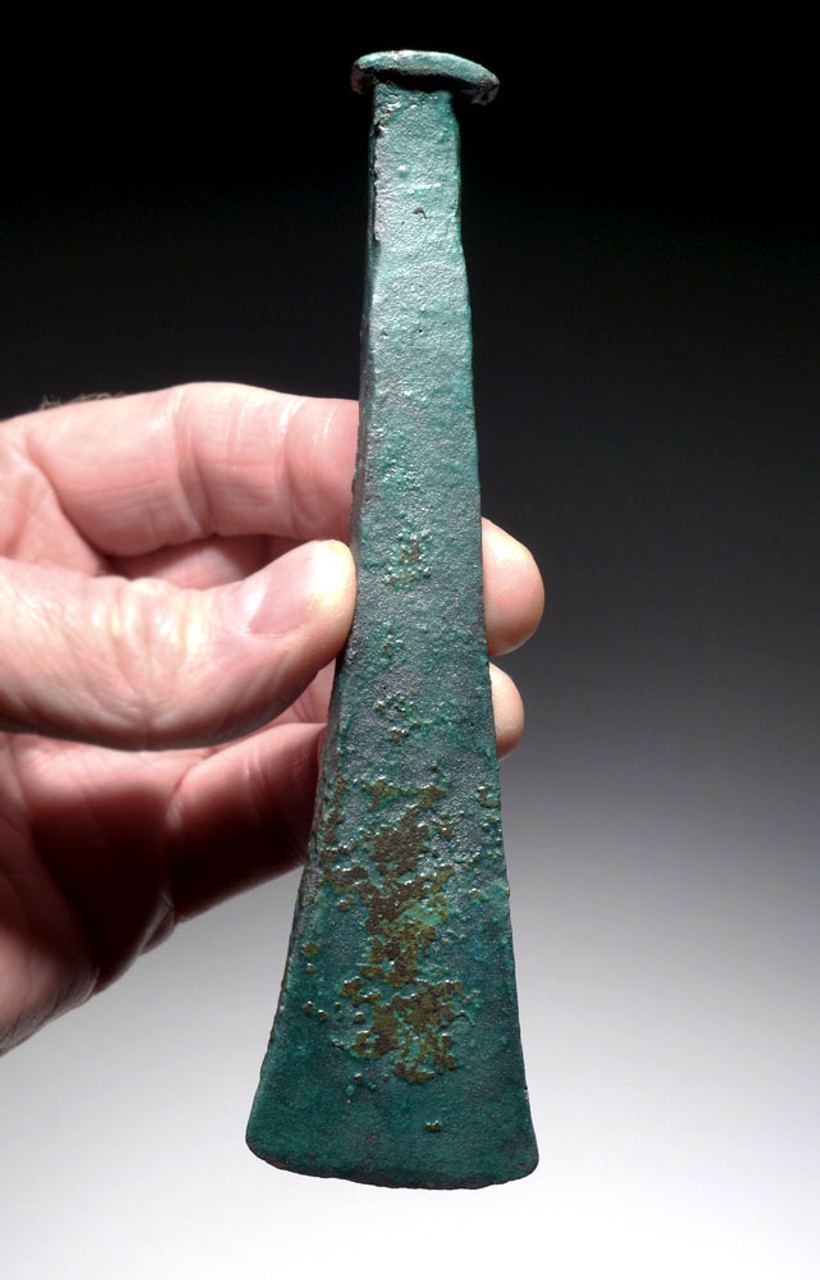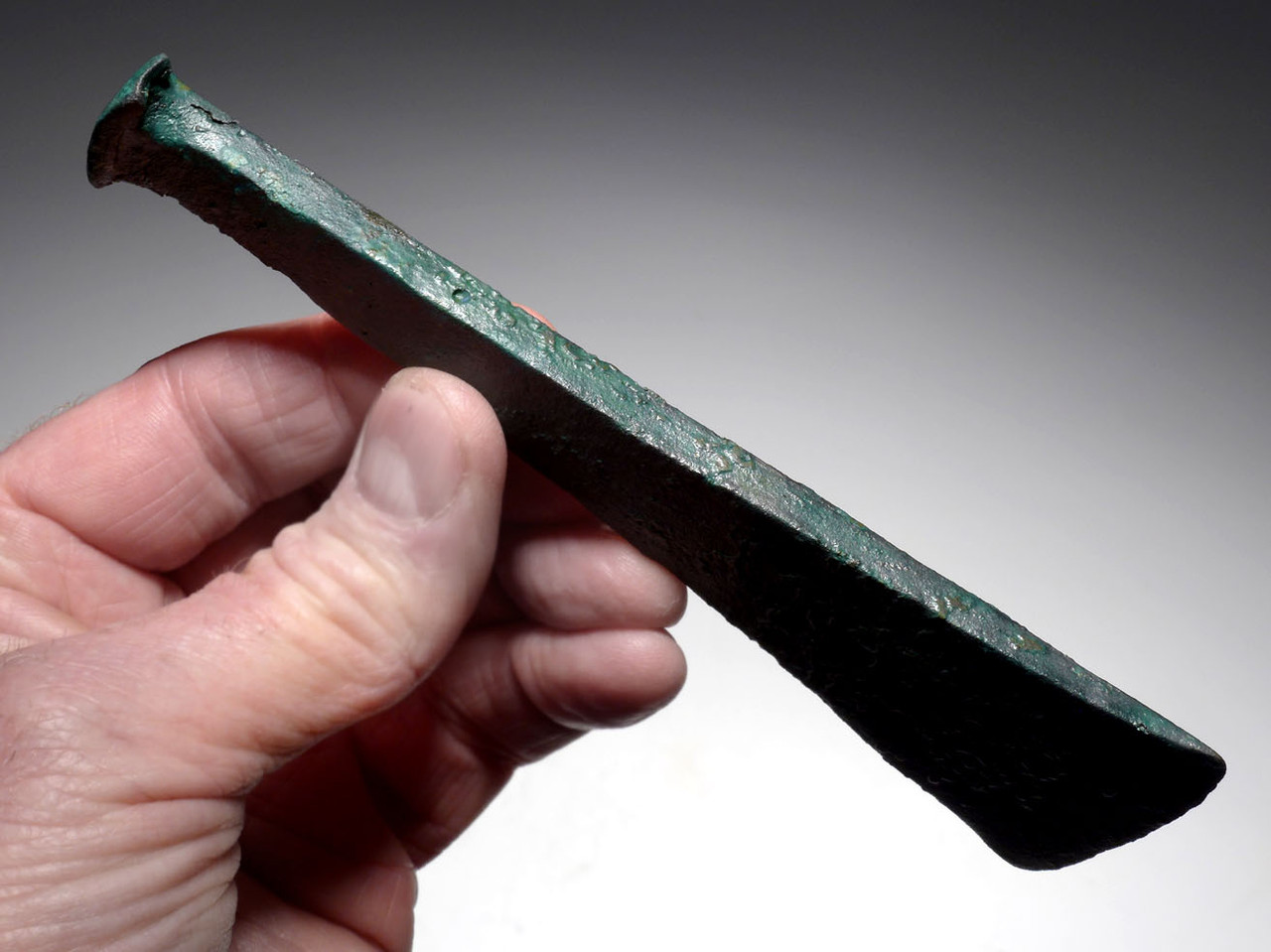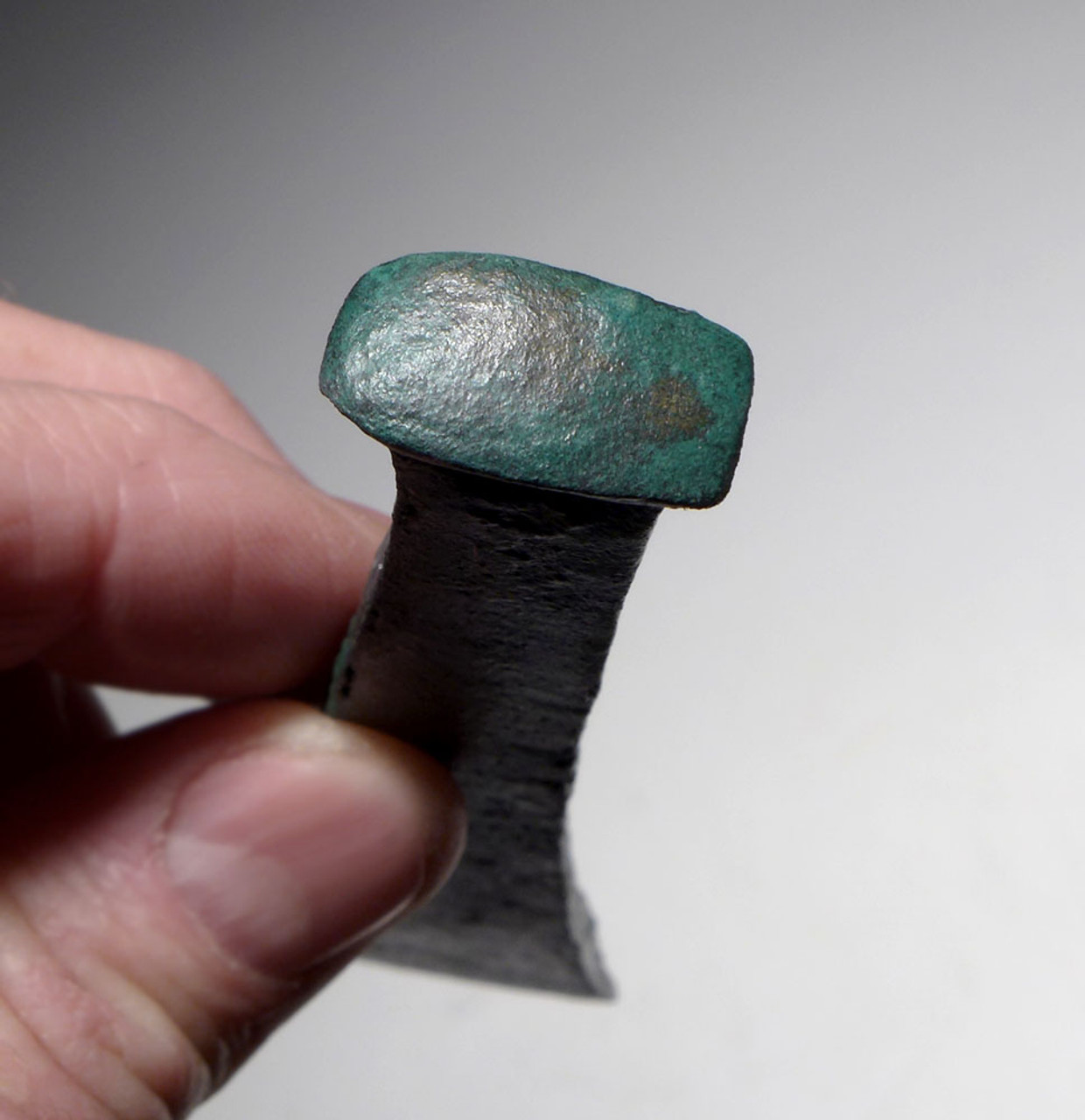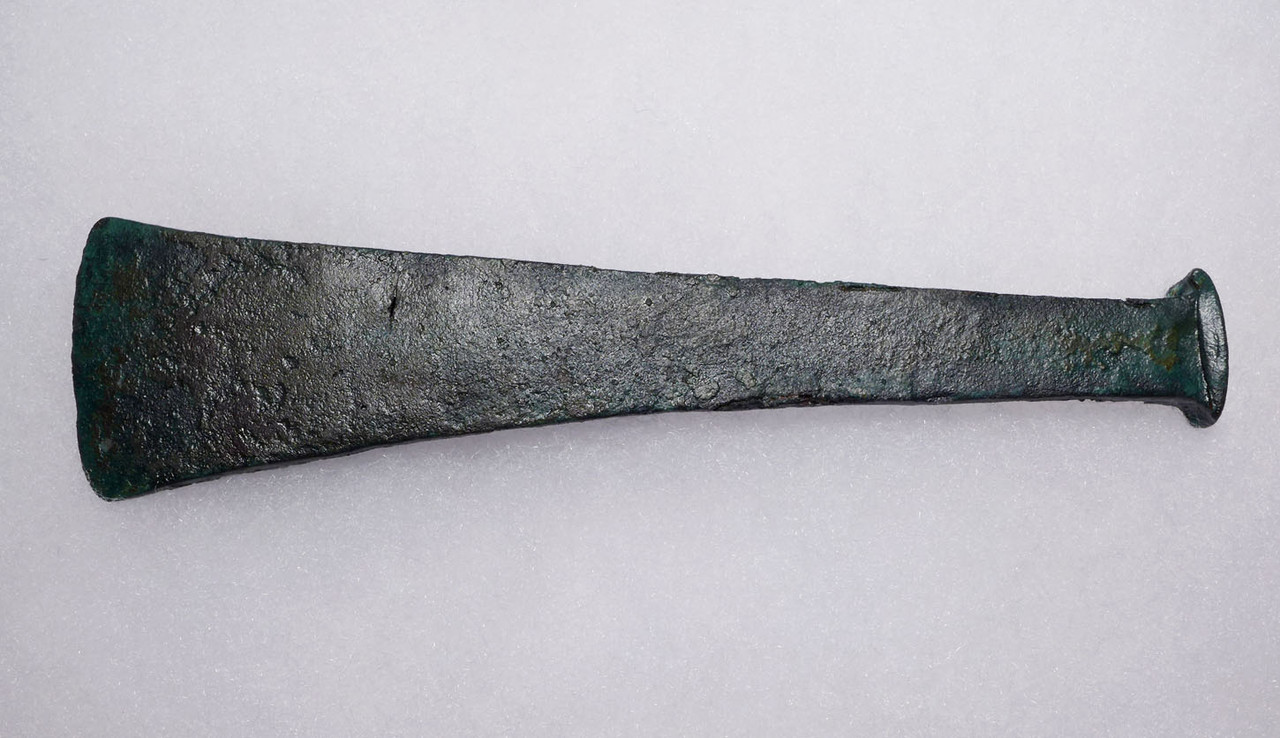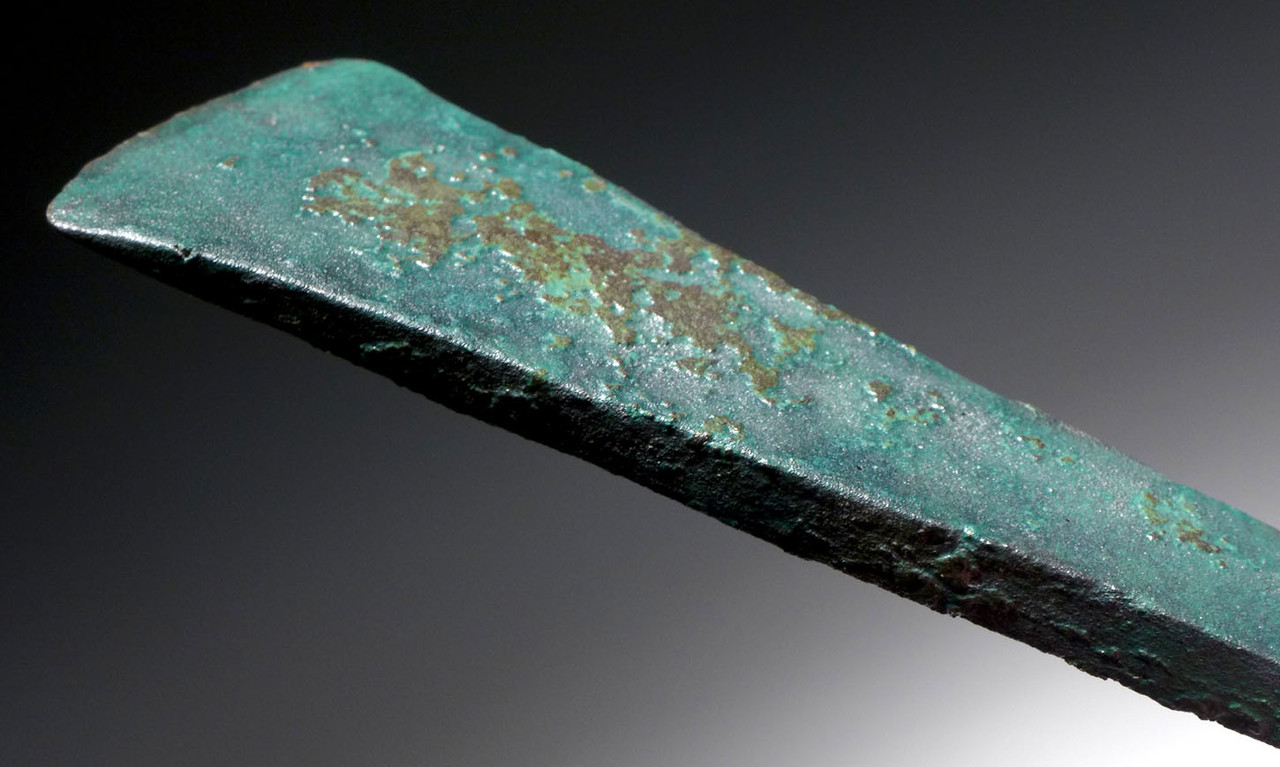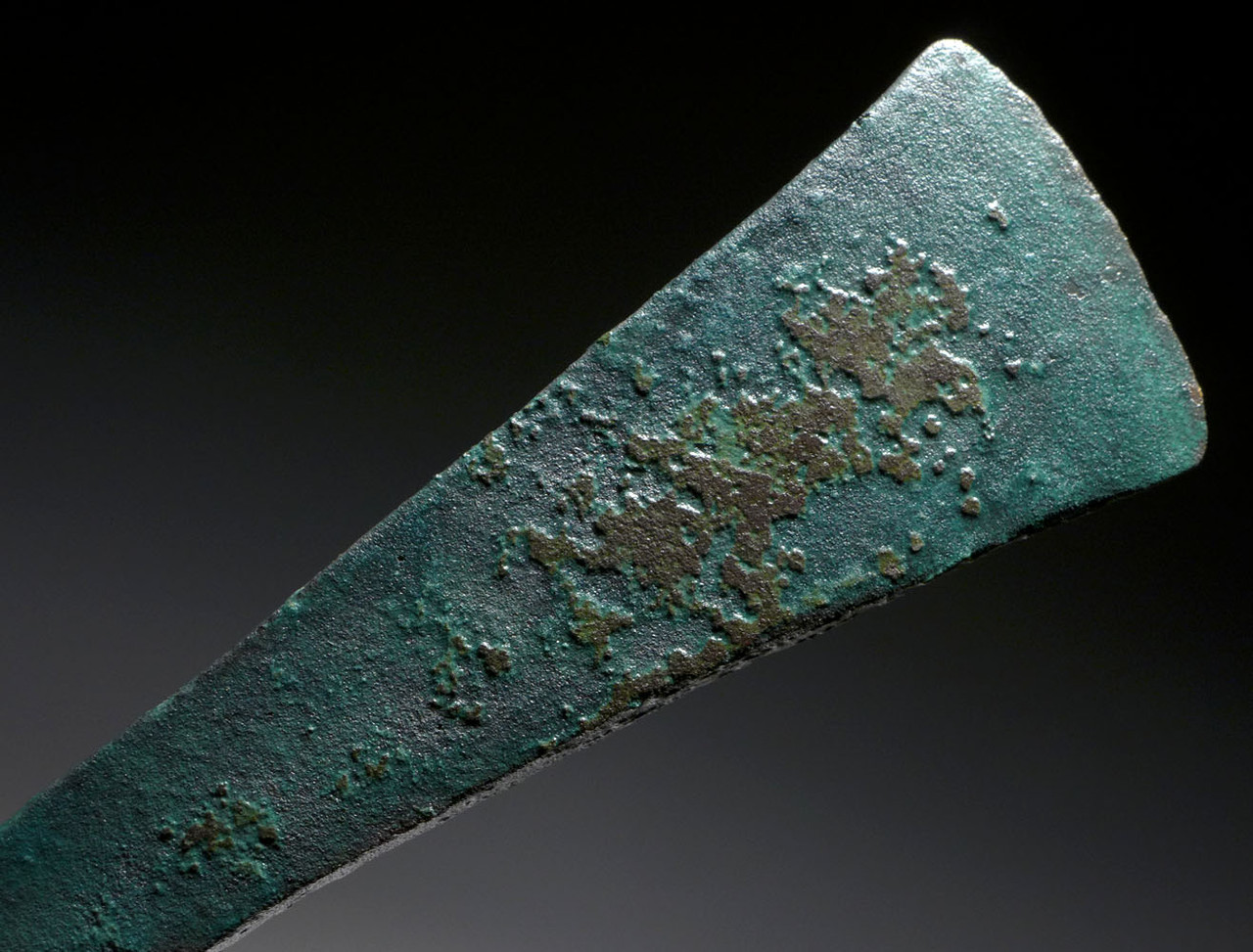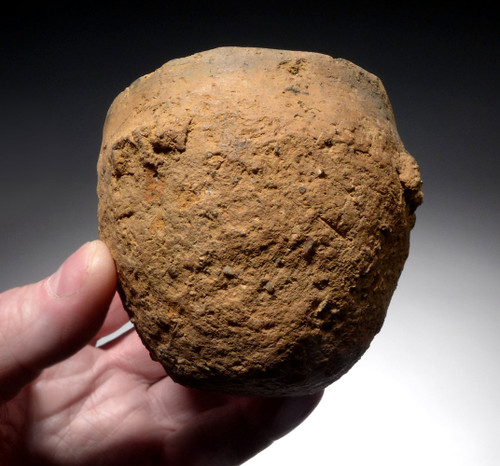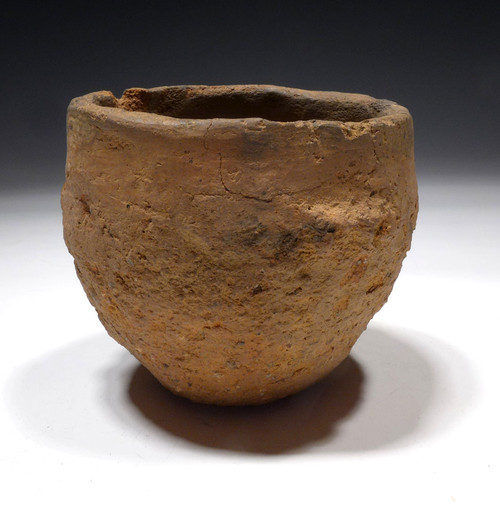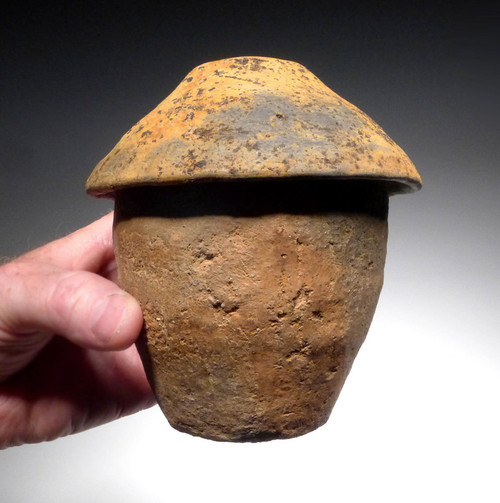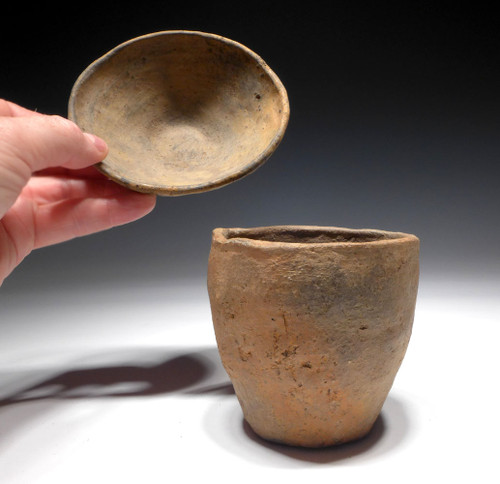Product Description
SEE MORE ANCIENT EUROPEAN BRONZE AGE ARTIFACTS
The legendary ancient stone statues and architecture accents, along with luxurious wood furniture and wood interior ornate work, were all carved by hand chisels such as this exemplary specimen. As a tool of a former master woodcarver, stone carver, or metalsmith artisan, this complete sand-cast copper bronze chisel features evidence of hammering on its butt end, showing actual use. The flared cutting end is slightly curved along a long narrow body, aiding in its use when held. The beautiful emerald green patina highlights the evidence of its sandcast nature of manufacture as seen on the roughness of one side.
A highly recommended tool of the ancient artist in perfect preservation!
Unlike most metal artifacts sold on the market that are untreated and uncleaned, our specimens our properly cleaned, inspected and conserved in our museum conservation lab prior to being offered for sale to our clients. If ancient metal is NOT treated and stabilized correctly, IT WILL CONTINUE TO DISINTEGRATE AND CORRODE, AND COULD EVENTUALLY FALL APART.
HISTORY
The Tumulus culture dominated Central Europe during the Middle Bronze Age (c. 1600 to 1200 B.C.). It was the descendant of the Unetice culture. Its heartland was the area previously occupied by the Unetice culture besides Bavaria and Württemberg. It was succeeded by the Late Bronze Age Urnfield culture. The Tumulus culture was eminently a warrior society, which expanded with new chiefdoms eastward into the Carpathian Basin (up to the river Tisza), and northward into Polish and Central European Únětice territories. The culture's dispersed settlements centered in fortified structures. As the name implies, the Tumulus culture is distinguished by the practice of burying the dead beneath burial mounds (tumuli or kurgans). The Tumulus culture was prevalent during the Middle Bronze Age. Tumuli have been used elsewhere in Europe from the Stone Age to the Iron Age yet, the term "Tumulus culture" specifically refers to the South German variant of the Bronze Age.
Important milestone achievements in metallurgy and mining (and smelting) raw materials for making metal handcrafts ushered in an entirely new prehistoric period called the Bronze Age. The use of bronze was central to both, the Tumulus and Unetice cultures. Although copper had already been in use in Anatolia since the 7th millennium B.C., the idea to alloy tin with copper to make bronze was discovered much later in the 3rd millennium B.C.. Bronze first appeared in the Near East, in the early third millennium B.C.. By the mid 3rd millennium B.C., it emerges in the Central Europe and by the end of the 3rd millennium, it was the most commonly used metal from the Atlantic coast to Southeast Asia.
The ease of working bronze versus copper helped advance popularity of the metal. The addition of tin also increases the hardness over copper making bronze a better metal for tools and weapons. Despite this, bronze was rarely used to produce weapons and tools in the early use of the metal. It was so highly valued that instead, it was used for jewelry, ornaments, or vessels. The perception that bronze resembled gold probably helped in its higher appreciation to the eye over copper which turned brown as it aged. Furthermore, tin is a rare material with few sources in Europe, and it must have been procured separately from copper from great distances. This could have significantly contributed to its value and attraction as raw material for precious objects.
 US DOLLAR
US DOLLAR
 EURO
EURO
 AUSTRALIAN DOLLAR
AUSTRALIAN DOLLAR
 CANADIAN DOLLAR
CANADIAN DOLLAR
 POUND STERLING
POUND STERLING



